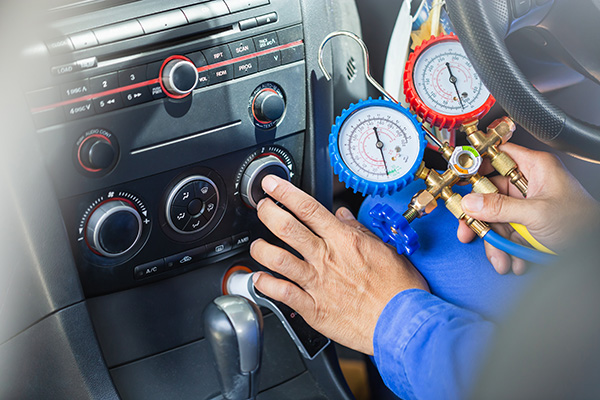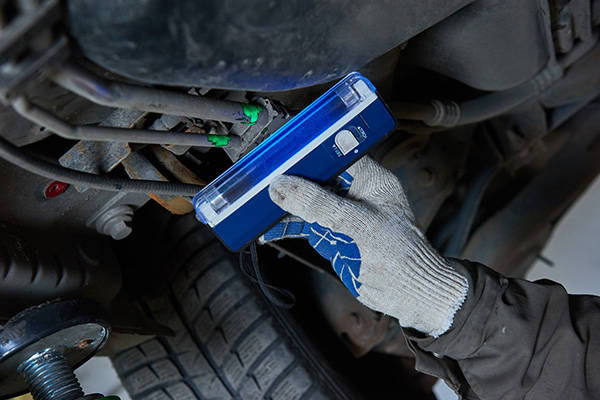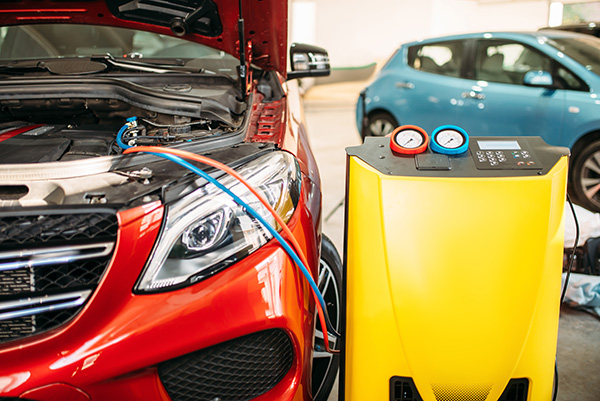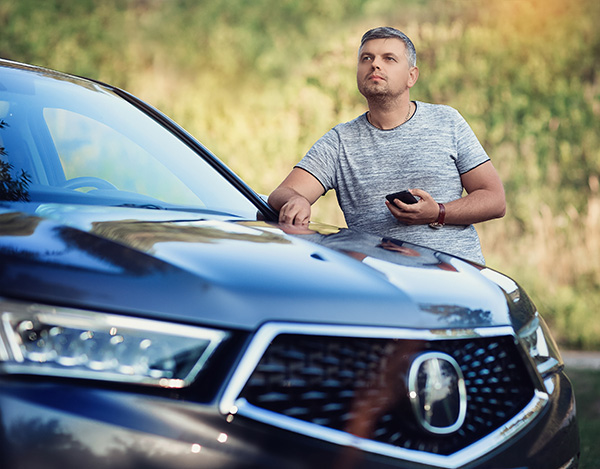Posted on 7/25/2025

On a hot day, there’s nothing more refreshing than stepping into a car with a properly working air conditioning system. When your A/C stops blowing cold air, though, it can quickly turn every drive into an uncomfortable experience. Many drivers hear terms like "A/C recharge" and "A/C repair" but aren’t quite sure what they mean or which one they need. Understanding the difference between these services can help you make the best decision for your vehicle and keep you cool on the road. How Your Car’s A/C System Works To understand why you might need an A/C recharge or repair, it helps to know how the system functions. Your car’s air conditioning system relies on a special refrigerant to absorb heat from the cabin and release it outside. This process depends on several components working together, including the compressor, condenser, evaporator, expansion valve, and various hoses and seals. When everything is working as it s ... read more
Posted on 7/11/2025

A working air conditioning system is a must-have, especially during warm weather. When your car's A/C isn’t blowing cold air like it should, one of the most common culprits is a refrigerant leak. While an A/C leak might seem like a minor inconvenience at first, it can lead to bigger problems if not addressed. Understanding what causes these leaks and how they are fixed can help you stay cool and avoid unexpected repairs. How Your Car’s A/C System Works Your vehicle’s air conditioning system relies on refrigerant to absorb and release heat, cooling the air before it enters the cabin. This refrigerant circulates through various components, including the compressor, condenser, evaporator, and hoses. If any part of the system develops a leak, refrigerant escapes, and the system loses its ability to cool effectively. Common Causes of A/C Leaks Several factors can lead to refrigerant leaks in your car's A/C system. Some of the m ... read more
Posted on 6/27/2025

When you turn on your car’s air conditioning expecting crisp, cool air and instead get a blast of warm air, it’s not just frustrating but also a sign that something in your A/C system needs attention. During the heat of summer in Northridge, a malfunctioning A/C can quickly make your daily drive uncomfortable, if not unbearable. There are several possible reasons your air conditioning isn’t performing as it should. Some are simple fixes, while others require professional inspection and repair. Either way, identifying the cause early helps you avoid more costly damage to your system. Low Refrigerant Levels One of the most common causes of warm air from your car’s vents is low refrigerant. Refrigerant is the substance that absorbs heat from the cabin and releases it outside. If your system is low on refrigerant, it may not have e ... read more
Posted on 6/27/2025

Your vehicle’s air conditioning system does more than keep you comfortable. It also improves air quality and helps defog your windows. Yet, many drivers forget about servicing it until it stops working. In places like Northridge, where summers can get hot quickly, that delay can leave you stuck with warm air and rising repair bills. Knowing how often to service your car’s A/C system helps you maintain consistent performance and avoid breakdowns when you need it most. Why Routine A/C Service Is So Important Your A/C system is made up of various components: the compressor, condenser, evaporator, hoses, refrigerant, and more. Over time, seals dry out, refrigerant slowly escapes, and components wear down. If you wait until the system fails completely, you could face a much more expensive repair than if it had been caught early. Routine service helps catch small issues before they grow into bigger ones, and it keeps your A/C system efficient and reliable thr ... read more
Posted on 5/30/2025

If you’ve ever taken a close look at an Acura and thought, “This feels a lot like a Honda,” you’re not imagining things. That’s because Acura is Honda’s luxury division, and beneath the leather seats and performance upgrades, the two brands share a lot more than just a family name. From engines and transmissions to interior components and chassis designs, Acuras and Hondas have plenty in common. But does that mean they’re identical? Not quite. Let’s take a closer look at where they overlap—and where they differ. A Shared Foundation Most Acuras are built on the same platforms as their Honda counterparts. For example, the Acura ILX shares much of its DNA with the Honda Civic, while the Acura MDX and RDX are closely related to the Honda Pilot and CR-V, respectively. That means under the surface, many of the structural elements—like the frame, suspension design, and even wheelbase—can be nearly identical ... read more